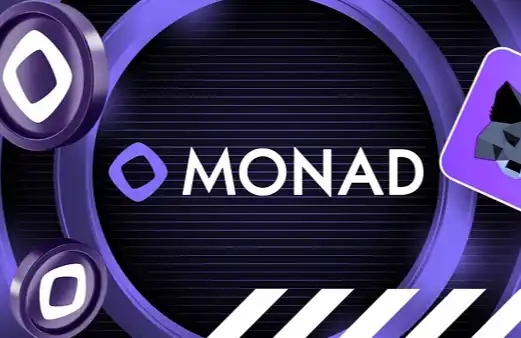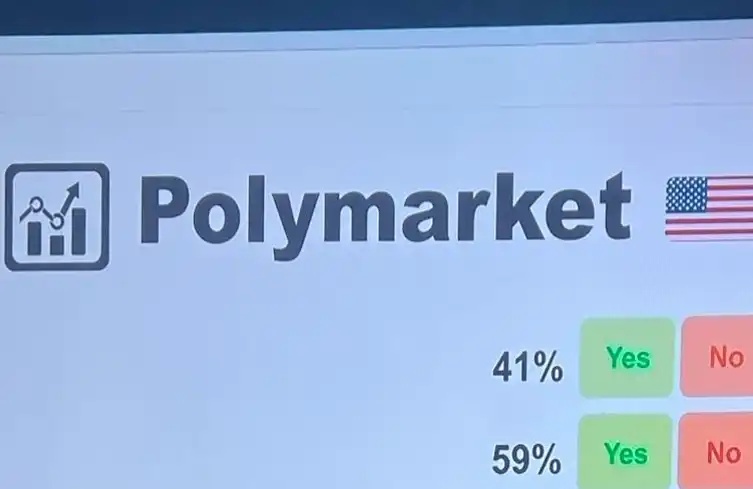ArkStream Capital: The 90-Minute USDe Depegging Event Misunderstood
Original Article Title: "ArkStream Capital: The 90-Minute Journey of USDe | A Misunderstood Depegging Event"
Original Source: ArkStream Capital
TL;DR
· Brief Depegging, Swift Recovery: On October 11, 2025, USDe experienced a momentary depegging on the Binance spot market, dropping briefly to $0.65, but lasting only a few minutes. The overall depegging lasted approximately 90 minutes ($0.75-$0.98), with a trading volume exceeding 780 million USDe. The price fully stabilized around $0.99 by 06:45 Beijing time.
· Partial Liquidity Dislocation: The volatility was primarily concentrated on Binance. Price divergences on other major exchanges and DEXs (Bybit, Curve, Uniswap) remained within 0.3%, indicating a point-specific liquidity imbalance rather than a systemic issue.
· Not a Market Crash Trigger: BTC, ETH, and SOL led the initial downturn around 04:45 Beijing time, triggering a cascade of liquidations. The price deviation of USDe appeared more like a secondary liquidity release rather than a triggering event for the downturn.
· Protocol Resilience Validated: Ethena smoothly processed over $20 billion in redemptions within 24 hours, without any downtime or delays. Aave's oracle price maintained the $0.99-$1.00 range, with no signs of liquidations, defaults, or liquidity crises in the system.
· Controllable Systemic Risk: The three major exchanges (Binance, Bybit, OKX) collectively hold around $2 billion in a risk fund, theoretically capable of withstanding a liquidation shock of around $200 billion under similar market conditions, significantly reducing the risk of ADL (Auto-Deleveraging) triggers.
On October 11, 2025, USDe briefly depegged to $0.65 on Binance but only for a few minutes. The overall depegging lasted approximately 90 minutes ($0.75-$0.98), with a trading volume exceeding 7.8 billion USDe. During the same period, prices on other major exchanges and on-chain markets mostly remained in the $0.99-$1.00 range with limited fluctuations. Overall, this was a case of partial liquidity dislocation rather than a systemic risk event—a cascade of liquidations triggered by a sudden BTC drop amplified on exchanges with shallow local depth. The Ethena protocol maintained a stable hedging structure, smooth redemption path, and robust oracle system in a high-volatility environment, successfully withstanding real-world stress tests, validating its stable mechanism with resilience against shocks and self-recovery capabilities.
Ethena's USDe Stability Mechanism Passes Real-World Test
USDe's Brief Price Dislocation on Binance
On October 11, 2025, USDe experienced a brief price dislocation on Binance, with the lowest price reaching $0.65 at one point, lasting approximately 90 minutes with a trading volume exceeding 780 million USDe.
During the same period, Bybit, as the second-largest spot market exchange, also saw a slight deviation in its USDe/USDT trading pair, but with limited magnitude and lower volume, having a negligible impact on the overall market.
Overall, the USDe dislocation on Binance lasted around 45 minutes with a peak dislocation of approximately -35% (instantaneous), with a total trading volume of over 780 million USDe. The nature of the event is more akin to a liquidity flash crash rather than a protocol structural risk.

USDe Dislocation and Reanchoring Process on Binance Spot (USDE/USDT)

Price Chart of USDE/USDT on Binance Exchange

Price Chart of USDE/USDT on Bybit Exchange
USDe on DEX Side (Uniswap / Curve) Shows No Systematic Deviation
Compared to Binance's significant dislocation, on-chain DEXs (such as Curve, Uniswap) only experienced slight and delayed price fluctuations, with a low reaching around $0.995, remaining stable overall, and virtually unpegged.

Price Chart of USDe/USDT on Uniswap

Price Chart for Curve's USDe/USDC Pair
USDe on Binance: Growth Trajectory and Post-Event Adjustment
Starting from September 22, 2025, Binance officially launched the USDe reward program, offering users a maximum of 12% annualized yield. The platform takes daily random snapshots to record users' lowest USDe holdings in spot, funding, and margin accounts (including collateral assets), calculates the yield based on the annualized rate, and distributes it to spot accounts every Monday. The activity period is from September 22, 2025, to October 22, 2025, and users holding at least 0.01 USDe for over 24 hours are eligible to participate.
Fueled by this incentive program, the USDe supply on the Binance platform once exceeded 5 billion US dollars.
Currently, the lending and futures collateral functions for USDe on Binance appear to be temporarily suspended, with frontend verification unavailable, and related leverage and lending data not being disclosed.
Based on subsequent announcements and parameter adjustments, it is speculated that during the depegging event, Binance may have directly used the USDe price index as the core price feed reference, with a minimum execution price of about $0.66.
Following the October 11 event to enhance system robustness, Binance promptly adjusted the risk control parameters for USDe, including incorporating the redemption price into the price index, setting a minimum execution price limit, and increasing the parameter review frequency to address potential market fluctuations.
Furthermore, according to the latest Binance announcement, a compensation plan of approximately 283 million US dollars has been initiated for users affected by this event (including assets related to USDe, BNSOL, and WBETH depegging).

USDe Index Price on Binance
Stability of the USDe Lending Market on Aave, No Cascading Liquidations
When analyzing Aave's related markets, the focus is mainly on the USDe lending pool and sUSDe. Although other assets related to USDe (such as pt-sUSDe, etc.) exist on Aave, their prices are highly correlated with USDe itself. As the Pendle protocol's USDe principal capital fund.
Currently, the lending pools of USDe are mainly distributed across Ethereum (approximately $1.1 billion) and Plasma (approximately $750 million) chains. Meanwhile, the deposit size of sUSDe on Ethereum is around $1 billion.
Due to the on-chain circular borrowing pattern, some users collateralize USDe and sUSDe to borrow other stablecoins, then re-exchange the funds and collateralize them back to USDe and sUSDe, thereby implementing a leveraged strategy to magnify USDe returns.

Aave's USDe, sUSDe Circular Lending Process
Based on Aave's price feed data, the oracle price of USDe on the platform has always remained around $1, even slightly higher than $1. On the other hand, the price feed of sUSDe has been around 1.2, indicating that USDe and sUSDe borrowing users on Aave have not been materially affected by Binance USDe's off-peg issue.
Note: This analysis focuses on the borrowing cycle and stability performance related to USDe and sUSDe. Liquidation events collateralized with other mainstream assets such as BTC, ETH, etc., are not within the scope of this discussion.

Aave Ethereum's USDe Price Feed

Aave Plasma's USDe Price Feed

Aave Ethereum's sUSDe Price Feed
We also tracked Aave's liquidation events through a third-party data analytics platform. The data shows that despite the overall liquidation amount of Aave reaching $192 million during the market downturn period (October 10th to 11th, 2025), there were very few liquidation events related to USDe and sUSDe, almost negligible.


Aave Liquidation Dune Dashboard
In the monitoring data from another risk analysis platform, Chaos Labs, we can also see Aave's liquidation activities, but there are no specific liquidation records directly related to USDe and sUSDe.

Aave Liquidation Data provided by Chaos Labs
Aave's Oracle Pricing and Price Feed Logic for USDe
Aave's pricing for USDe is not fixed to peg to $1; instead, it adopts a composite oracle mechanism:
USDe Price = Chainlink USDe/USD Price Feed × sUSDe/USDe Internal Exchange Rate × CAPO (Price Adapter) Adjustment Coefficient
This pricing logic has been clearly outlined in Aave's official governance proposal "sUSDe and USDe Price Feed Update" and its risk analysis document.
While some in the community have proposed pegging the USDe price directly to $1 (aligning it with USDT), such proposals have not yet been approved or deployed.
Therefore, at this stage, Aave still calculates the reference price of USDe based on the real-time Chainlink price feed and the sUSDe internal exchange rate.
During the period of October 11–12, 2025, the Chainlink USDe/USD price feed remained in the range of $0.992–$1.000, with minimal overall volatility and no significant deviation from the peg.
Chainlink's USDe price feed uses a multi-source aggregation and denoising weighting mechanism: it is not directly sourced from a single exchange but combines trading data from multiple centralized and decentralized markets, aggregates through a node network, filters out anomalies, and calculates a validated weighted average price (Reference Price).
This price feed is typically updated on a minute-by-minute basis and is widely used for collateral and liquidation calculations in protocols like Aave.
Thanks to this mechanism, the pricing of USDe on Aave can effectively reflect its market-wide fair value, thereby avoiding price deviations due to individual exchange's short-term fluctuations or liquidity imbalances.

Chainlink's USDe Price Feed
During the detaching period, there was no abnormal USDe fund flow on Binance
No significant abnormal inflows were observed. The USDe balance on Binance was around 4.7 billion USD, significantly down from the previous 5.2 billion USD before the event, with a decrease of about 500 million USD. This change is broadly consistent with the overall trend of the USDe total supply decreasing from 14.6 billion USD to 12.8 billion USD.
Looking at the collateral structure, BTC position decreased by about 650 million USD, ETH decreased by about 130 million USD, stablecoin assets decreased by about 400 million USD. In conclusion, the decrease in USDe issuance this time is mainly due to long liquidations and the contraction of the derivatives market's capital, rather than stability attacks or runs on a single exchange level.

Arkm's Binance Asset Status

USDe Supply Change

Underlying Asset Change of USDe

Underlying Asset Change of USDe
Relationship between overall market decline and USDe detachment
In fact, BTC started to decline at 4:45, and major assets such as ETH, SOL also experienced pullbacks in the same period. The market saw a sharp drop at 5:15, but at this time, USDe had not shown obvious detachment.
Therefore, it can be inferred that the USDe's price deviation from its peg was not directly triggered by an overall market decline but was more likely caused by users on Binance holding leveraged borrowing positions who, in response to margin pressure, engaged in concentrated selling of USDe, leading to a brief liquidity squeeze and price deviation.
It is still unclear whether any market makers used USDe as collateral to participate in market liquidity provision. Based on actual testing, Binance currently only allows USDe deposits into leverage accounts and has not yet enabled its use as collateral for contracts, thus potentially limiting its market-making utility.

BTC Price Decline Chart
Systemic Risk and USDe Stability Analysis in ENA
ENA System Resilience Structure
The current total issuance of USDe within the ENA ecosystem is estimated at $14 billion.
Where:
· Approximately 60% (≈ $8.4 billion) is the "liquidity stablecoin" portion, mainly used for protocol internal deployment and recollateralization;
· Approximately 40% (≈ $5.6 billion) is stablecoin liabilities formed through hedging structures, where:
· BTC spot + shorts account for approximately 28% (corresponding to issuance of around $3.9 billion USDe);
· ETH spot + shorts account for approximately 11% (corresponding to issuance of around $1.54 billion USDe).
This implies that the stability of the BTC and ETH hedging positions directly determines the system's resilience to risk.
Core Systemic Risk
The primary systemic risk of USDe lies in its effectiveness and sustainability of short positions hedging:
· If the short positions on BTC / ETH are forcibly closed due to sharp market fluctuations or ADL (auto-deleveraging) triggers, the ENA protocol will lose the corresponding neutral hedging structure.
· At this point, the protocol will hold not a hedged portfolio but an approximate $3.9 billion long BTC exposure.
· If the market further drops by 10%–20%, USDe's asset side will suffer real losses, and the stablecoin will face actual unpegging pressure.
Additionally, funding rate compression and liquidation delays in extreme market conditions may also lead to an expansion of asset-side losses, as evidenced by the decrease in BTC dominance data in this event.
Potential Re-Unpegging and Monitoring Focus
USDe's market anchoring is mainly determined by the exchange order book. Therefore, if a large sell-off occurs (such as a whale dumping), even if the asset side remains healthy, a short-term unpegging may occur.
It is essential to continuously monitor the following indicators:

Potential Impact on Overall Liquidity
If USDe experiences substantial unpegging, the market impact may resemble a partial liquidity crisis:
· Protocol-level BTC hedging positions becoming ineffective → Asset-side risk exposure;
· LPs and borrowers in the stablecoin pool will prioritize withdrawing funds → Accelerated stablecoin outflow;
· If a feedback loop is formed, the extent of unpegging will be positively correlated with the BTC price drop.

BTC Futures Open Interest Data
Ethena's Response Mechanism to ADL and Exchange Risk
The Ethena team has long had contingency plans for potential Auto Deleveraging (ADL) and exchange system risks, which are clearly outlined in the official documentation.
This section mainly focuses on two scenarios:
· Auto Deleveraging Risk;
· Exchange Failure Risk.
Auto Deleveraging (ADL) is the "last line of defense" that major derivatives exchanges use in extreme situations to prevent systemic risk. When the insurance fund is depleted and cannot cover the liquidation losses, the exchange will forcibly close profitable positions to eliminate the risk exposure.
Ethena pointed out in the document that although theoretically ADL may lead to the forced liquidation of partial hedge positions, the trigger probability is extremely low on current mainstream exchanges (such as Binance, Bybit, OKX) due to:
· The insurance fund size is sufficient;
· The liquidation system has multiple layers of risk buffers and self-healing mechanisms;
· During market fluctuations, exchanges will prioritize risk mitigation through internal matching and isolated margin sharing.
Even if ADL is triggered in individual exchanges, Ethena can quickly restore market neutrality by immediately rebuilding hedge positions and actively realizing unrealized PnL (realize PnL).
Overall, the impact of ADL on Ethena is limited to a transient interruption risk in positions, and will not pose a systemic threat to the price anchoring of USDe or asset security.
Multi-Exchange Risk Fund Capacity Assessment
Based on Ethena's hedge position distribution and the risk reserve size of major exchanges, the following calculation can be made:
As of October 11, 2025, the total daily market liquidation amount is approximately $20 billion.
Among them, Binance's officially disclosed risk fund balance has decreased by about $200 million, estimating its risk absorption rate in extreme market conditions to be about 10%.
If calculated based on the current Binance risk fund size of around $1 billion, then its theoretical maximum liquidation capacity under similar market conditions would be approximately: ≈ $100 billion daily liquidation volume (corresponding to a 10% risk absorption rate)
Ethena's hedge positions are distributed across multiple mainstream exchanges (Binance, Bybit, OKX, etc.) with a significant risk diversification effect.
Estimated based on public data:
· Binance: approximately $1.04 billion
· Bybit: approximately $380 million
· OKX: approximately $320 million
Total approximately $2 billion
Under the same assumption (around a 10% risk absorption rate), the combined risk fund size of the three major platforms theoretically can withstand approximately $200 billion in daily liquidation impact without triggering systemic risk.
This result indicates that Ethena's multi-exchange hedging strategy exhibits sufficient resilience and depth of defense in risk distribution, such that even in extreme volatility, the Systemic Deleveraging (ADL) risk remains within a manageable range.


Reference Links
· https://app.ethena.fi/dashboards/transparency
· https://www.binance.com/en/trade/USDE_USDT?type=spot
· https://www.bybit.com/en/trade/spot/USDE/USDT
· https://aavescan.com/ethereum-v3/usde
· https://dune.com/KARTOD/AAVE-Liquidations
· https://community.chaoslabs.xyz/aave/risk/liquidations
· https://intel.arkm.com/explorer/entity/binance
· https://portal.llamarisk.com/ethena/overview
· https://www.binance.com/en/futures/funding-history/perpetual/insurance-fund-history
· https://www.bybit.com/en/announcement-info/insurance-fund/
· https://www.okx.com/zh-hans/trade-market/risk/swap
· https://help.defisaver.com/protocols/aave/ethena-liquid-leveraging-on-aave-in-one-transaction
· https://governance.aave.com/t/arfc-susde-and-usde-price-feed-update/20495
· https://data.chain.link/feeds/ethereum/mainnet/usde-usd
· https://www.binance.com/zh-CN/support/announcement/detail/9eb104f497044e259ad9bd8f259f265c?utm_source=chatgpt.com
· https://www.binance.com/zh-CN/support/announcement/detail/f3d5d97ed12c4f639019419bd891705e?utm_source=chatgpt.com
· https://www.binance.com/zh-CN/support/announcement/detail/0989d6c7f32545bfb019e3249eaabc3f
· https://www.binance.com/en/margin/interest-history
· https://www.coinglass.com/BitcoinOpenInterest
Welcome to join the official BlockBeats community:
Telegram Subscription Group: https://t.me/theblockbeats
Telegram Discussion Group: https://t.me/BlockBeats_App
Official Twitter Account: https://twitter.com/BlockBeatsAsia


 Forum
Forum Finance
Finance
 Specials
Specials
 On-chain Eco
On-chain Eco
 Entry
Entry
 Podcasts
Podcasts
 Activities
Activities
 OPRR
OPRR









